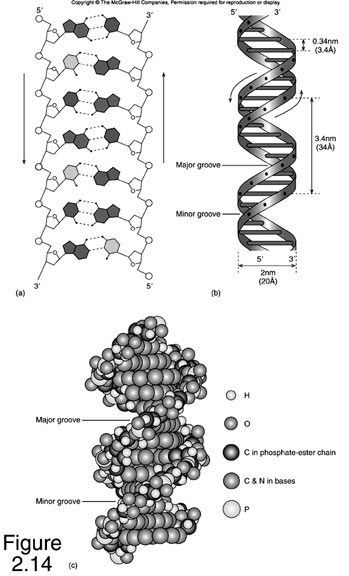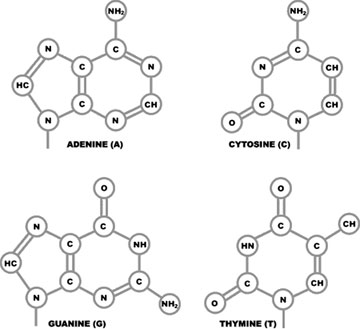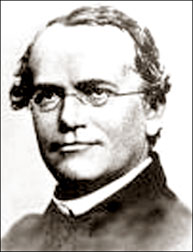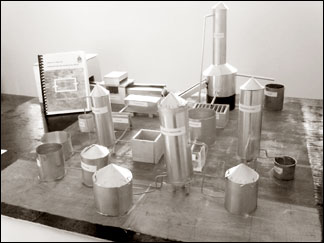|

DNA fingerprinting Foolproof method in local medico-judicial system
 Just
by matching victims' blood in the Hokandara multiple murder case with
stains found on the suspects' clothes, three enthusiastic scientists
helped the judicial system to prove that suspects definitely were the
killers. Just
by matching victims' blood in the Hokandara multiple murder case with
stains found on the suspects' clothes, three enthusiastic scientists
helped the judicial system to prove that suspects definitely were the
killers.
This was not a case one may see in `X-Files' or CSI television
series. A team of scientists - late Dr. Maya Gunasekara, Dr. Nalin
Goonesekara and Dr. Neil Fernandopulle - with the support of a grant
from the National Science Foundation became the pioneers in introducing
DNA as a foolproof method in the medico-legal system in Sri Lanka.
What is discussed here is not such action series but a real story
where a scientific advancement sharpened the sensors of the judiciary
system of our country. It is the result of sheer dedication and
enthusiasm of a group of Sri Lankan scientists who developed the DNA
fingerprinting or typing technology in Sri Lanka.
Found in the nucleus of each cell in our body, our genes are made up
of tightly coiled threads of a substance known as deoxyribonucleic acid
or better known as DNA, which is the blueprint of life carrying the
hereditary characters of any person. DNA patterns vary between
individuals and for each person it is unique in different factors.
DNA fingerprinting or typing is the characterization of individuals
using DNA.
This technology is the most advanced method in identification of
individuals from biological specimens as well as in determining family
relationships.
The field of study is known as Molecular Anthropology. DNA typing has
a wide range of effects on both civil and criminal law thus helping to
improve human rights of individuals in a society. The uses of DNA typing
in the legal process are many:
(i) Convicting those guilty of crime,
(ii) Pardoning the innocent charged,
(iii)Speeding up the dura tion of legal trials,
(iv)Accurately identifying a rapist,
(v)Determining the paternity of a child,
(vi)Identifying human remains in mass graves.
Some of the well-known forensic cases included the Hokandara multiple
murder, Colombo Royal Park murder and Judge Sarath Ambepitiya murder,
some of the paternity issues in rape cases and alleged cases of incest.
Identification of Baby 81 using DNA typing during the 2004 Tsunami
received international publicity.
The researches believe that DNA fingerprinting will be useful in
sociology studies such as tracing the origin of different ethnic groups
in Sri Lanka, like the Veddahs, and to check historical events, amongst
many others.
 "I
joined as a research student in 1997," Dr. Neil Fernandopulle said.
Later, in 2002 Dr. Maya Gunasekara, Dr. Nalin Goonesekara and Dr. Neil
Fernandopulle established a private company dedicated to genetechnology
by the name 'Genetech'. "I
joined as a research student in 1997," Dr. Neil Fernandopulle said.
Later, in 2002 Dr. Maya Gunasekara, Dr. Nalin Goonesekara and Dr. Neil
Fernandopulle established a private company dedicated to genetechnology
by the name 'Genetech'.
"The research started in 1997 and as part of it we took the Hokandara
multiple murder case and another paternity case by end 1999 and the
outcome was tremendously successful," said Dr. Fernandopulle, the
present Chief Executive of Genetech Molecular Diagnostic.
At present Genetech is the major provider of DNA typing technology to
the Government of Sri Lanka and has, to date submitted evidence for over
1,700 civil cases and over 450 criminal cases.
"Presently the field is showing tremendous success. The police
Department has shown great interest. And the Inspector General of Police
as well as several other Senior DIGs showed great interest in training
Police Officers," Dr. Fernandopulle said.
So far they have trained over 5,000 police officers and a special
training is given to the Scene Of the Crime of Officer(SOCO) of the
Police Department. "The present technology used in our country is in par
with that of the Federal Bureau of Investigations (FBI). The basic
technology used in this process is Polymerase Chain Reactions. "We use a
method called Short Tandem Repeats which are in people's genes," Dr.
Fernandopulle added.
The company is planning to expand into mitochondrial DNA, Y
chromosome analysis and hole genome amplification technologies which are
the very recent developments in Genetechnology.
The National Science Foundation, proud to be a part of this success
story, awarded `Genetech' for outstanding leadership in introducing
technologies/services at their National Science and Technology Awards
2008.
*************
What is DNA?
DNA, or deoxyribonucleic acid, is the hereditary material in humans
and almost all other organisms. Nearly every cell in a person's body has
the same DNA. Most DNA is located in the cell nucleus (where it is
called nuclear DNA), but a small amount of DNA can also be found in the
mitochondria (where it is called mitochondrial DNA or mtDNA).
Each DNA sequence that contains instructions to make a protein is
known as a gene. DNA contains the instructions needed for an organism to
develop, survive and reproduce. To carry out these functions, DNA
sequences must be converted into messages that can be used to produce
proteins, which are the complex molecules that do most of the work in
our bodies. DNA is made of chemical building blocks called nucleotides.
These building blocks are made of three parts: a phosphate group, a
sugar group and one of four types of nitrogen bases. To form a strand of
DNA, nucleotides are linked into chains, with the phosphate and sugar
groups alternating.
The four types of nitrogen bases found in nucleotides are: adenine
(A), thymine (T), guanine (G) and cytosine (C). Each base has a slightly
different composition, or combination of oxygen, carbon, nitrogen, and
hydrogen. The order, or sequence of these bases determines what
biological instructions are contained in a strand of DNA. The nitrogen
bases pair up with each other, A with T and C with G, to form units
called base pairs.
The sequence of these bases determines the information available for
building and maintaining an organism, similar to the way in which
letters of the alphabet appear in a certain order to form words and
sentences. Nucleotides are arranged in two long strands that form a
spiral called a double helix. The structure of the double helix is
somewhat like a ladder, with the base pairs forming the ladder's rungs
and the sugar and phosphate molecules forming the vertical sidepieces of
the ladder.An important property of DNA is that it can replicate, or
make copies of itself. Each strand of DNA in the double helix can serve
as a pattern for duplicating the sequence of bases. This is critical
when cells divide because each new cell needs to have an exact copy of
the DNA present in the old cell.
Source: Internet
*************
National Science and Technology Awards 2008
Recognising and rewarding the invaluable contribution made by our
scientists and technologists towards economic and social development,
the Ministry of Science and Technology in collaboration with the
National Science Foundation held the annual "National Science and
Technology Awards - 2008" on December 13. This year the applications
were called for under 13 categories. Prizes awarded are as follows:-
New technologies with commercial potential - Riyad Ismail for Ez
Turbo Charcoal stove.
Value addition to local biological resources - Industrial Technology
Institute for Development of Cashew Nutshell Liquid as Wood
Preservative.
Development and Adaptation of Technologies for SMES - Rubber Research
Institute for Cost Effective User Friendly and Efficient Dryer for
Drying Rubber Sheets.
Locally Developed New Technologies which have resulted in a
Successfully Marketed Product/Services - Sampath Bank for the
e-Remittance System.
Engineering Product Design and Development for Commercial
Applications - Dialog- Uni of Moratuwa Mobile Communications Research
Laboratory.
Development of Eco-materials/eco-Friendly Processes for Industry -
Vidya Jothi Dr. Ray Wijewardene, Dr. H.A.J. Gunathilake, P.G. Joseph,
Parakrama Ranasinghe for finding Gliricidia as fuel, fodder and
fertilizer crop.
Quality Improvement of Products, Processes and Services - Hansa
Industries for better yields with HANSMACK drum seeders.
Outstanding Leadership in Introducing Technologies/Services -
Genetech Molecular Diagnostics and School of Genetechnology for
Outstanding Leadership in Developing and Introducing Advanced
technologies that serve the people. Development of Viable substitutes
for imports - Glide (Pvt) Ltd. and Sinindu Enterprises (Pvt) Ltd. for
manufacturing of shoe heels using recycled e-waste.
Outstanding S&T Contributions having an Impact on Major National
Projects - Prof. D.A. Tantrigoda, Dr. M.M.P.M. Fernando of Dept of
Physics, Sri Jayawardanepura University.
Contributions by Science and/or technology in Reducing Use of Energy
- NERD for Development of an Energy Efficient Tea Dryer.
Father of Genetics
 Gregor
Johann Mendel (July 20,1822 - January 6, 1884) Gregor
Johann Mendel (July 20,1822 - January 6, 1884)
People have known for many years that living things inherit traits
from their parents. Researchers did not understand exactly how traits
were passed on to the next generation, until the middle of the 20th
century. Gregor Johann Mendel was a German speaking Austrian Augustinian
priest and a scientist, studied the inheritance of traits in pea plants.
Mendel showed that the inheritance of traits follows particular laws,
which were later named after him. The significance of Mendel's work was
not recognized until the turn of the 20th century. Its re-discovery
prompted the foundation of the discipline of genetics.
Recycling plant tackles phone battery dump
by Harshini PERERA
Creativity mingled with revolutionary thinking of mankind initiates
sustainable development. This is surprisingly true in the field of
engineering where final year students of the Department of Chemical and
Process Engineering of the University of Moratuwa technically succeeded
in implementing a lab-scale phone battery recycling plant.
|

Lab-scale phone battery recycling plant |
Recycling of phone batteries is not an easy task. The complexity of
the recycling process itself is reflected as only a few companies in the
world are engaged in the enterprise.
If they are not recycled, millions and millions of phone batteries
are dumped into the environment haphazardly.
According to statistics of the Sri Lanka Customs, 1,169,338 of
primary cells and batteries were imported into Sri Lanka from Singapore
in 2007 while 805,239 of other types of cells and batteries were
imported from Hong Kong in 2008. Thus, the quantity of waste batteries
have also increased. The phone battery waste can be so hazardous because
the chemicals such as lithium, nickel, cobalt chloride contained in
batteries are toxic and hence dumping of batteries and other waste
materials could contaminate the soil and harm the entire biosphere and
the hydrosphere.
Some heavy metals like Cadmium(Cd) should not be mixed with water.
Accumulation of such metals in edible plants or fish in the streams will
lead to contamination with poisons.
The process of recycling batteries is not available in Sri Lanka
since it is complex. But it is a profitable enterprise. It includes
several scientific steps, namely smelting, electrolysing, solvent
extracting, stripping, oxidising and gas treating. These procedures are
complex and require high technology and machinery.
Unless the recovered metals are in good quality, neither exportation
nor reuse in production of batteries can be done.
The Department of Chemical and Process Engineering has been credited
for this complicated task by innovating a recycling plant as a pilot
project. If developed it may turn out to be foreign exchange earner. At
the beginning of the process, Iron is retrieved at the initial stage. In
the second step Lithium carbonate and Aluminium oxide are recovered
since alloy metals in the mixture get deposited. Aluminium oxide is a
major component in glass production.
Copper is extracted by electrowinning the alloy using Sulphuric acid.
And later in the same process, economically valuable Cobalt chloride and
Nickel chloride are recovered.
Innovative ideas of phone battery recycling plant should not be
limited only to lab scale innovation but developed and practically used
for the well-being of all. The main problem researchers would face is
not knowledge but financial support to initiate such experiments into
large scale industries. |
